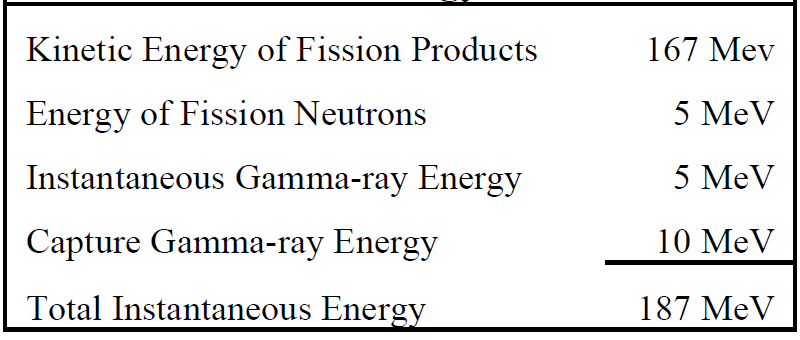
تاريخ الفيزياء

علماء الفيزياء


الفيزياء الكلاسيكية

الميكانيك

الديناميكا الحرارية


الكهربائية والمغناطيسية

الكهربائية

المغناطيسية

الكهرومغناطيسية


علم البصريات

تاريخ علم البصريات

الضوء

مواضيع عامة في علم البصريات

الصوت


الفيزياء الحديثة


النظرية النسبية

النظرية النسبية الخاصة

النظرية النسبية العامة

مواضيع عامة في النظرية النسبية

ميكانيكا الكم

الفيزياء الذرية

الفيزياء الجزيئية


الفيزياء النووية

مواضيع عامة في الفيزياء النووية

النشاط الاشعاعي


فيزياء الحالة الصلبة

الموصلات

أشباه الموصلات

العوازل

مواضيع عامة في الفيزياء الصلبة

فيزياء الجوامد


الليزر

أنواع الليزر

بعض تطبيقات الليزر

مواضيع عامة في الليزر


علم الفلك

تاريخ وعلماء علم الفلك

الثقوب السوداء


المجموعة الشمسية

الشمس

كوكب عطارد

كوكب الزهرة

كوكب الأرض

كوكب المريخ

كوكب المشتري

كوكب زحل

كوكب أورانوس

كوكب نبتون

كوكب بلوتو

القمر

كواكب ومواضيع اخرى

مواضيع عامة في علم الفلك

النجوم

البلازما

الألكترونيات

خواص المادة


الطاقة البديلة

الطاقة الشمسية

مواضيع عامة في الطاقة البديلة

المد والجزر

فيزياء الجسيمات


الفيزياء والعلوم الأخرى

الفيزياء الكيميائية

الفيزياء الرياضية

الفيزياء الحيوية

الفيزياء العامة


مواضيع عامة في الفيزياء

تجارب فيزيائية

مصطلحات وتعاريف فيزيائية

وحدات القياس الفيزيائية

طرائف الفيزياء

مواضيع اخرى
Distribution of Fission Energy
المؤلف:
U.S. Department of Commerce, National Technical Information Service, 1993
المصدر:
The Nuclear Physics and Reactor Theory Handbook
الجزء والصفحة:
p 61
3-4-2017
2276
Distribution of Fission Energy
The average energy distribution for the energy released per fission with a thermal neutron in uranium-235 is shown in Tables 1 and 2.
TABLE 1: Instantaneous Energy from Fission

TABLE 2: Delayed Energy from Fission

Because the 10 MeV of neutrino energy shown in Table 2 is not absorbed in the reactor, the average value of 200 MeV per fission is still accurate. Note in Table 1 that some fission neutrons undergo radiative capture and the resultant gamma ray emission provides an additional 10 MeV of instantaneous energy, which contributes to the total of 187 MeV instantaneous energy.
All of the energy released, with the exception of the neutrino energy, is ultimately transformed into heat through a number of processes. The fission fragments, with their high positive charge and kinetic energy, cause ionization directly as they rip orbital electrons from the surrounding atoms. In this ionization process, kinetic energy is transferred to the surrounding atoms of the fuel material, resulting in an increase in temperature. The beta particles and gamma rays also give up their energy through ionization, and the fission neutrons interact and lose their energy through elastic scattering. Of the 200 MeV released per fission, about seven percent (13 MeV) is released at some time after the instant of fission. When a reactor is shut down, fissions essentially cease, but energy is still being released from the decay of fission products. The heat produced by this decay energy is referred to as "decay heat." Although decay energy represents about seven percent of reactor heat production during reactor operation, once the reactor is shut down the decay heat production drops off quickly to a small fraction of its value while operating.
The decay heat produced is significant, however, and systems must be provided to keep the reactor cool even after shutdown.
 الاكثر قراءة في مواضيع عامة في الفيزياء النووية
الاكثر قراءة في مواضيع عامة في الفيزياء النووية
 اخر الاخبار
اخر الاخبار
اخبار العتبة العباسية المقدسة

الآخبار الصحية















 قسم الشؤون الفكرية يصدر كتاباً يوثق تاريخ السدانة في العتبة العباسية المقدسة
قسم الشؤون الفكرية يصدر كتاباً يوثق تاريخ السدانة في العتبة العباسية المقدسة "المهمة".. إصدار قصصي يوثّق القصص الفائزة في مسابقة فتوى الدفاع المقدسة للقصة القصيرة
"المهمة".. إصدار قصصي يوثّق القصص الفائزة في مسابقة فتوى الدفاع المقدسة للقصة القصيرة (نوافذ).. إصدار أدبي يوثق القصص الفائزة في مسابقة الإمام العسكري (عليه السلام)
(نوافذ).. إصدار أدبي يوثق القصص الفائزة في مسابقة الإمام العسكري (عليه السلام)


















